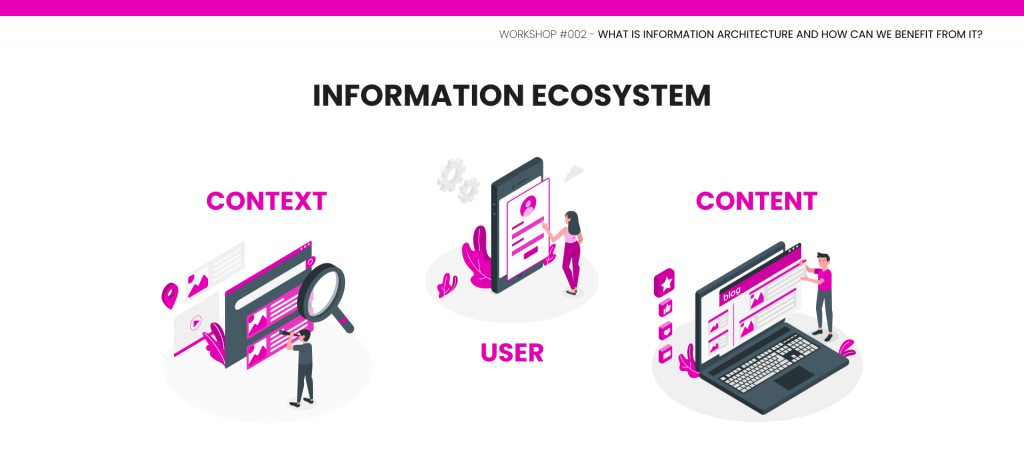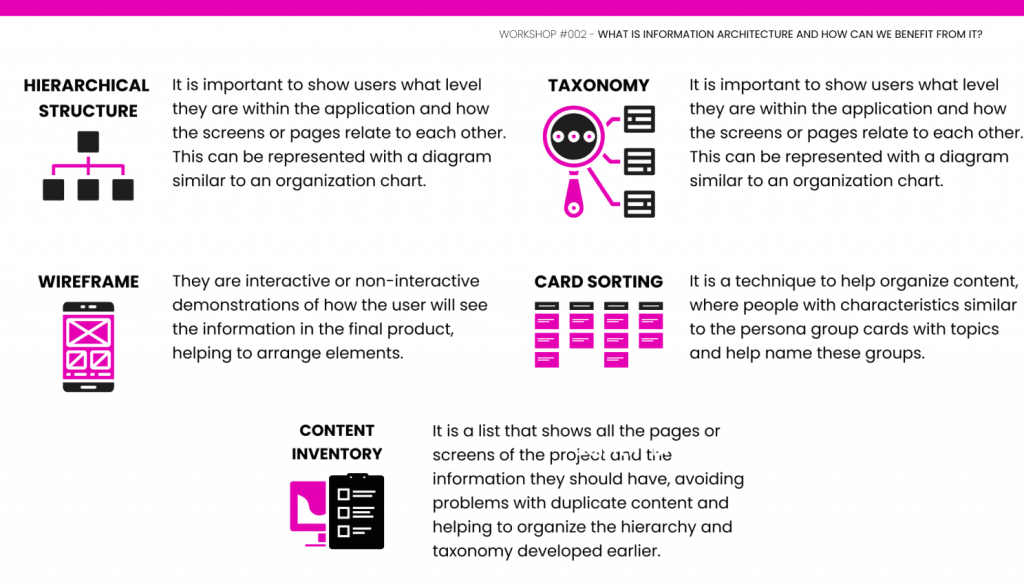
What is Information Architecture and how can we benefit from it?
In our daily routine, when we use the internet or apps, we are bombarded with a lot of information. What you may not know is that there are people working behind the scenes of these sites and apps to organize and structure this information in a way that provides a better experience for the user.
These professionals are known as UX Designers, and their work involves creating useful and intuitive digital assets using Information Architecture (IA).
But what is Information Architecture?
Information Architecture is the science and art of organizing information in a way that is understandable for all users. Just as an architect needs to organize the spaces and elements of a building in a way that is easy for occupants to use, an Information Architect needs to organize and present information in a way that is easy for people to find and use the information they need.
The concept of IA is divided into 3 major categories:
- Context
- User
- Content

Context: It is important to investigate the business context to start projects properly. Just as ignoring users, ignoring business objectives can be dangerous and can lead to project failure, even if it is technically well done.
Users: They can be considered as clicks, impressions, advertising revenue, and sales. No matter how you call them and how you count them, they are the final judges of our information environments. Build a website that confuses customers and they will go elsewhere, build an intranet that frustrates employees and they won’t use it.
Content: It is broadly defined as material in your information environment, from documents, data, images, and more. It is crucial that users are able to find the content before using it, and ease of location is an aspect that precedes usability.
Why is Information Architecture important?
There are some questions that the user needs to be able to answer quickly as soon as they enter a website:
- What is this?
- What do they have here?
- What can I do here?
- Why should I be here and not on another website?

Information Architecture is important because it helps to organize and structure information in a clear and accessible way, making navigation and search more efficient for users. Although implementing Information Architecture can be a time-consuming and complicated process, in the long run it can prevent many problems and save money for the company. For example, it can prevent customers from having to call technical support because they couldn’t find what they needed on the website. It can also prevent the website from appearing on complaint sites, and prevent customers from having a bad experience and blaming the company for it.
Methodologies used by AI professionals:
It is important to remember that only a few methodologies are described here, but there are many others and the choice will depend on all the research done beforehand, context, user, and content.

Relationship between AI and UX:
When it comes to developing a website, application, or software, it is essential to invest in user-centered design to ensure its success. In this process, Information Architecture and UX are areas that work together, but are not the same thing.
Information Architecture serves as a foundation for the work of user experience designers. While AI provides the necessary resources to structure information, making the system understandable and easy to use, UX is responsible for creating a pleasant interaction model for users, taking into account their needs and behaviors.
Therefore, both Information Architecture and UX are important for creating successful digital products because one complements the other in the goal of delivering user-friendly digital products that provide a great user experience.
written by Francisco Vito and mentored by Samantha Colognese Tamiosso